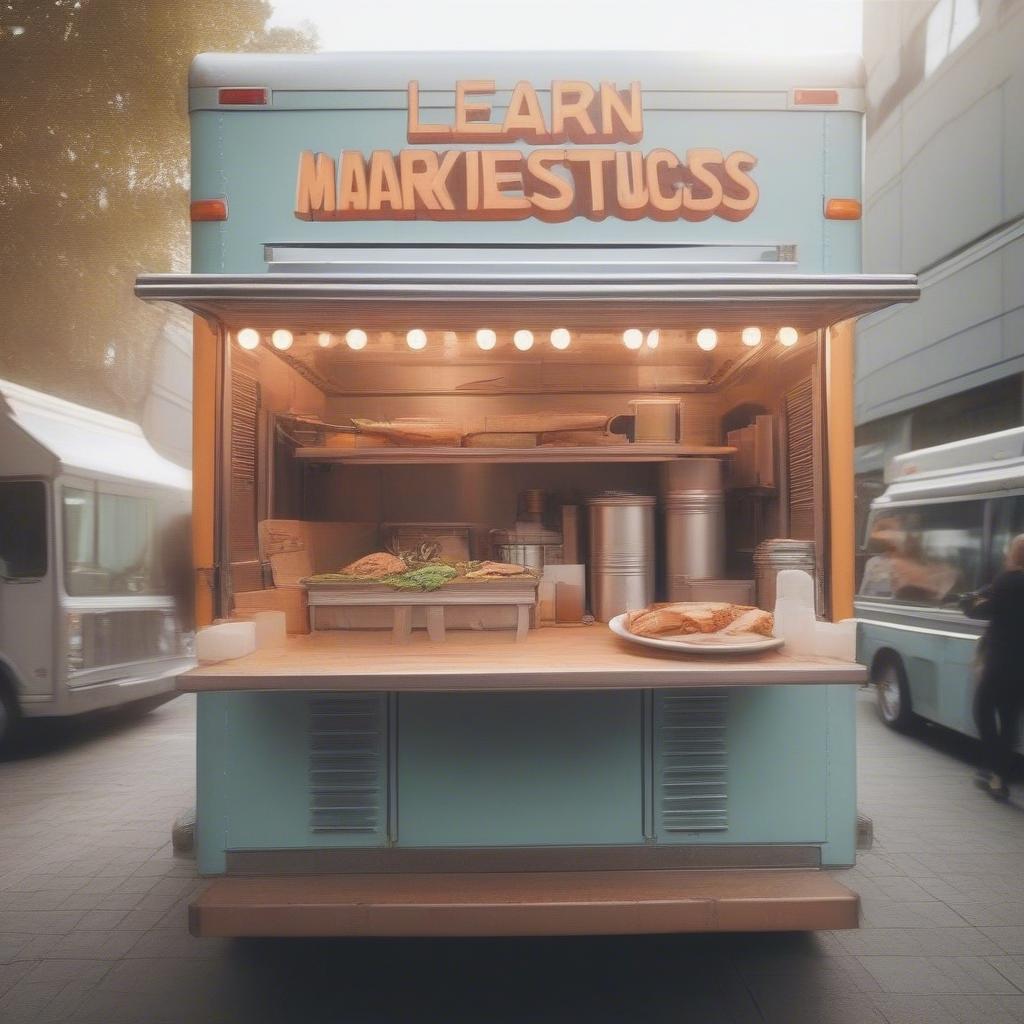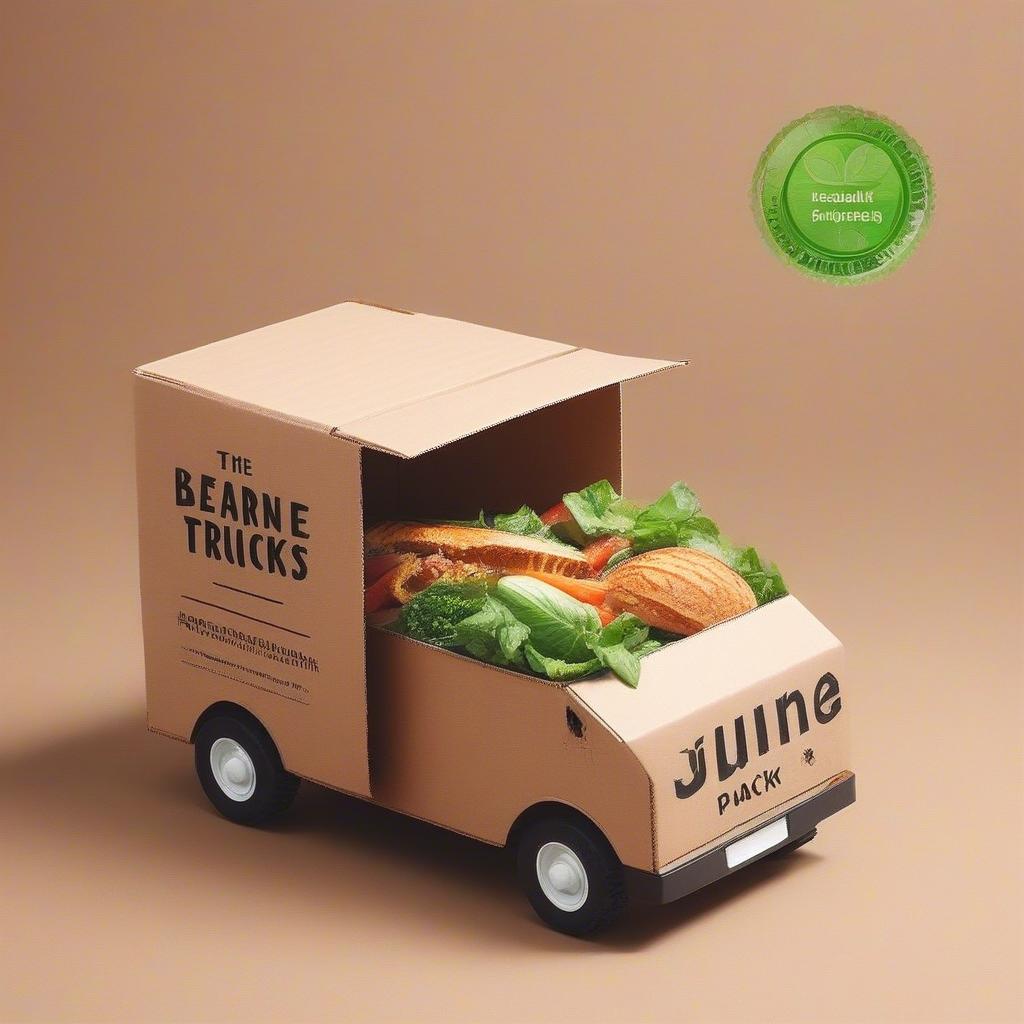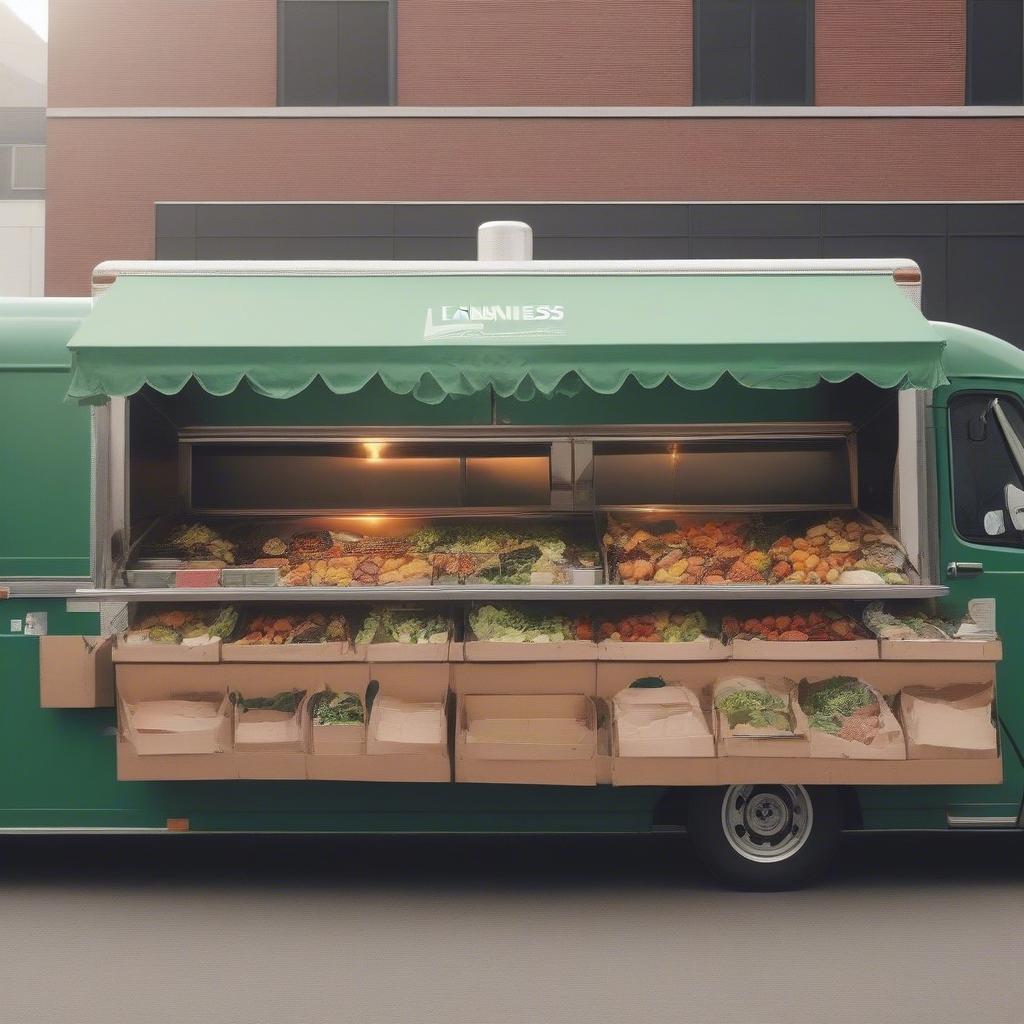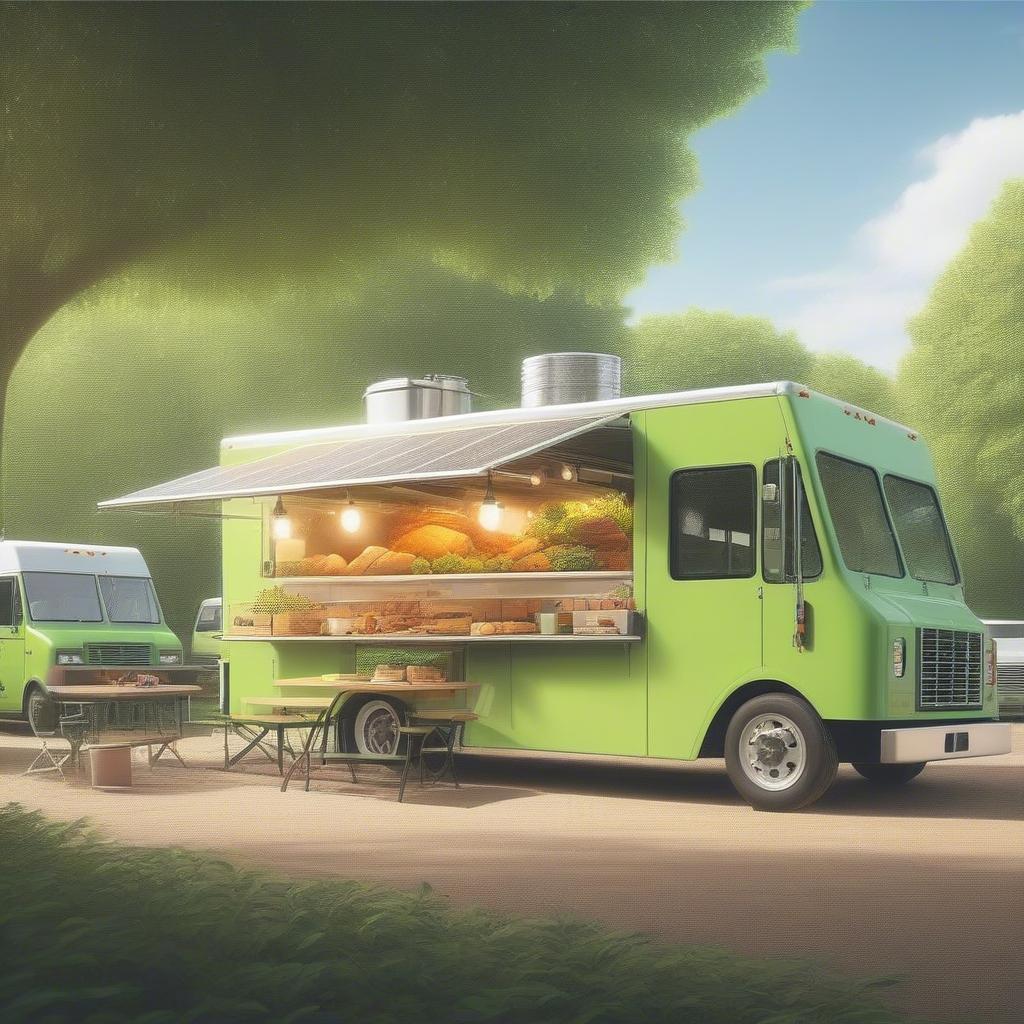
Introduction: The Road to Food Truck Glory
The food truck industry is booming, a vibrant scene where culinary creativity meets entrepreneurial spirit. But owning a food truck isn’t just about whipping up delicious dishes; it’s about mastering the art of food truck marketing. A mouthwatering menu is your foundation, but effective marketing strategies are the engine that drives your business to success. Without a solid game plan, even the most delectable tacos can go unnoticed. This article will unveil the top promotional ideas and essential success tips to navigate the competitive landscape and ensure your food truck thrives.
Understanding Your Target Audience: The Heart of Effective Marketing
Before diving into specific tactics, you need to understand who you’re trying to reach. Food truck marketing isn’t a one-size-fits-all approach. Are you targeting busy professionals during lunch hours? Families looking for a weekend treat? Late-night revelers craving something unique?
- Demographics: Consider age, income, location, and lifestyle.
- Psychographics: Understand their values, interests, and motivations. What appeals to them? Are they eco-conscious? Do they crave gourmet experiences?
Location: Where do they live, work, and spend their leisure time? This will influence your positioning and scheduling.
Why is this so important? Because knowing your audience allows you to tailor your messaging, your menu, and your promotional ideas for maximum impact.
Building a Brand That Sizzles: It’s More Than Just Food
A strong brand identity is the cornerstone of your food truck marketing strategy. It’s what sets you apart and makes you memorable.
- Name and Logo: Choose a name that’s catchy, reflective of your cuisine, and easy to remember. Design a logo that is visually appealing, unique and that stands out.
- Color Palette and Typography: Develop a consistent color palette and typography that you use across all your marketing materials, from your truck wrap to your social media.
- Brand Story: What makes your food truck special? Share your passion, your values, and the unique story behind your food. People connect with authenticity.
Example: A food truck specializing in authentic Mexican cuisine might use vibrant colors, traditional patterns, and a name that evokes the warmth of Mexican culture.
Creating Your Brand Voice
- Consistent Tone: Determine your brand’s voice. Are you playful and humorous? Sophisticated and upscale? Authentic and down-to-earth? Keep this tone consistent across all your communication channels.
- Customer Interaction: Your interactions with customers also shape your brand. Be friendly, attentive, and responsive.
Online Presence: Your Digital Food Truck Command Center
In today’s digital age, a robust online presence is non-negotiable for food truck success.
Website: Your Home Base
- Essential Information: Your website should clearly display your menu, location, hours of operation, and contact information.
- High-Quality Images: Showcase your food with mouthwatering photos. Visuals are key in the food industry.
- Easy Navigation: Ensure your website is user-friendly, especially on mobile devices.
- Online Ordering: If possible, integrate an online ordering system for pick-up or delivery.
- Blog: Share your story, recipes, and events through a blog. This can help boost your search engine optimization (SEO).
Social Media: Engaging Your Customers
- Platform Choice: Focus on the platforms where your target audience spends their time. Instagram is essential for visually driven food businesses, while Facebook can be great for local outreach. TikTok is great for reaching a new audience with trending reels.
- Content is King: Share high-quality photos and videos of your food, behind-the-scenes glimpses, and engaging stories.
- Engage with Your Audience: Respond to comments and messages promptly. Run contests, polls, and Q&A sessions.
- Hashtags: Use relevant hashtags to reach a wider audience. Examples include: #foodtruck #streetfood #yourcityfoodtruck #foodtrucklife etc.
- Local Partnerships: Collaborate with other local businesses or influencers for cross-promotion.
Tip: Create a social media content calendar to plan and schedule your posts. This will ensure you’re consistently engaging with your audience.
Location, Location, Location: Finding Your Sweet Spot
The right location can make or break your food truck success.
- High-Traffic Areas: Look for locations with plenty of foot traffic, such as business districts, parks, festivals, and event venues.
- Permits and Regulations: Research the permit requirements in your area.
- Competition: Analyze the competition in different locations. Are there other food trucks nearby?
- Trial and Error: Be prepared to experiment with different locations to find what works best for your business.
- Regular Schedule: Establish a regular schedule so your customers know where to find you.
Example: A food truck specializing in breakfast items might target office areas during the morning hours.
Event Catering: Expanding Your Reach
- Private Events: Offer catering services for private events, parties, and corporate gatherings.
- Public Events: Participate in local food truck events, festivals, and farmers’ markets.
- Partnerships: Partner with event planners and organizers.
Promotional Ideas That Drive Sales: Getting the Word Out
Beyond the basics, strategic promotional ideas are key to attracting new customers and keeping regulars coming back.
Loyalty Programs: Rewarding Your Customers
- Punch Cards: Offer a free item or discount after a certain number of purchases.
- Digital Loyalty Programs: Use mobile apps to track customer purchases and offer personalized rewards.
- Exclusive Perks: Provide special offers and discounts to your loyal customers.
Discounts and Deals: Attracting New Customers
- Introductory Offers: Offer discounts or specials to new customers.
- Limited-Time Promotions: Create a sense of urgency with limited-time offers.
- Happy Hour Specials: Offer discounts during slower times of the day.
- Combo Deals: Create attractive combo meals that offer more value for the customer.
- Student Discounts: Target students with special offers.
Contests and Giveaways: Engaging Your Audience
- Social Media Contests: Run contests on social media to boost engagement and brand awareness.
- Food Challenges: Create fun challenges related to your food or offer the most creative photo for a free meal.
- Free Meal Giveaways: Partner with other businesses to offer giveaways to their customer base and reach new audiences.
Local Partnerships: Building Community
- Cross-Promotion: Partner with local businesses for cross-promotional campaigns.
- Collaborative Menus: Collaborate with other food trucks to create unique menus or dishes.
- Community Events: Participate in local community events and festivals.
Public Relations: Leveraging Media Coverage
- Local Media: Reach out to local newspapers, magazines, radio stations, and blogs.
- Press Releases: Send out press releases when you’re opening a new location, launching a new menu item, or participating in an event.
- Influencer Marketing: Partner with local food bloggers and influencers.
Menu Optimization: The Heart of Your Offering
Your menu is your most powerful marketing tool. It’s not just about what you serve, but how you present it.
- High-Quality Ingredients: Use fresh, high-quality ingredients. This will impact the taste and quality of your food.
- Variety and Balance: Offer a variety of options that cater to different tastes and dietary needs (vegetarian, vegan, gluten-free).
- Signature Dishes: Develop signature dishes that set you apart from the competition.
- Seasonal Menus: Change your menu seasonally to keep things interesting.
- Clear and Concise Descriptions: Describe your menu items in detail, using mouthwatering language.
- Pricing Strategy: Research your competitor’s prices to ensure your prices are competitive.
Menu Presentation: Making Your Food Look Irresistible
- High-Quality Photos: Use high-quality photos on your menu board, website, and social media.
- Attractive Design: Use a clean, attractive design for your menu boards and flyers.
- Easy to Read: Ensure your menu is easy to read, with clear font and sizing.
Customer Service: Building Relationships
Exceptional customer service is crucial for food truck success. Happy customers become loyal customers and brand advocates.
- Friendliness and Attentiveness: Be friendly and attentive to your customers.
- Prompt Service: Serve customers quickly and efficiently.
- Address Concerns Promptly: Address any customer complaints or concerns immediately and professionally.
- Collect Feedback: Ask for feedback to continuously improve your business.
- Personalized Interactions: Make an effort to remember your regulars.
Tracking and Analysis: Measuring Your Success
It’s essential to track your marketing efforts to understand what’s working and what’s not.
- Sales Data: Track your sales data to see which menu items are most popular and when your peak hours are.
- Website Analytics: Track your website traffic and engagement.
- Social Media Analytics: Monitor your social media engagement and reach.
- Customer Feedback: Collect customer feedback through surveys, online reviews, and direct conversations.
- Adjust Your Strategy: Based on your data, adjust your marketing strategies to optimize results.
Learn Business: Your Partner for Food Truck Success
Navigating the world of food truck entrepreneurship can be challenging, but you don’t have to do it alone. Learn Business is here to provide guidance and support for businesses of all sizes, including food trucks. We understand the unique challenges you face, and we’re committed to helping you achieve success.
How Learn Business Can Help You:
- Customized Business Plans: We provide templates and resources to help you create a comprehensive business plan tailored to your food truck.
- Marketing Templates: We offer templates for social media posts, email campaigns, menus, and flyers.
- Financial Planning Tools: We provide tools to help you manage your finances, track your expenses, and project your revenue.
- Expert Guidance: Our team of experienced business mentors can provide personalized guidance and support.
- Community Support: Connect with other food truck owners and entrepreneurs through our online community.
With Learn Business, you’ll gain the knowledge, resources, and support you need to navigate the complexities of food truck marketing and build a thriving business. We’ll help you refine your promotional ideas, maximize your success tips, and build a sustainable and profitable food truck.
Conclusion: The Road Ahead
The food truck industry is competitive, but with the right marketing strategies and dedication, you can achieve success. Remember to understand your target audience, build a strong brand, establish a solid online presence, find the right locations, implement effective promotional ideas, optimize your menu, and provide outstanding customer service. Most importantly, always be ready to adapt, innovate and learn. By applying these success tips and continuously refining your approach, you’ll be well on your way to food truck glory. Don’t forget to leverage the support and resources offered by Learn Business to accelerate your journey and achieve your business goals. The road ahead is full of flavor and opportunity – go make it yours.



Leave a Reply